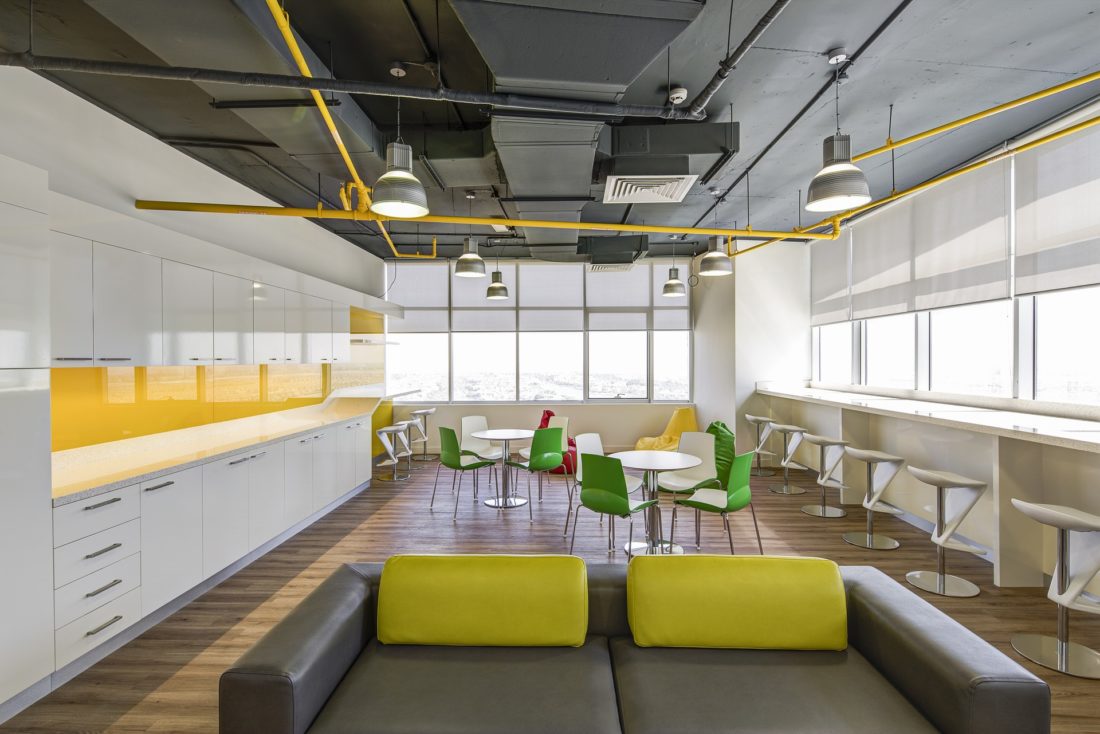Having an Office with a Kitchen vs. Catering Lunch

Businesses wishing to provide employees with on-site dining options for lunch generally have two options to choose from: a kitchen break room where workers can store, prep, and eat their own meals, and a cafeteria where third-party caterers provide fresh selections for employees to purchase.
Both choices have their own set of pros and cons:
Office Kitchen
Pros: Assembling and maintaining an office kitchen is cheaper than a recurring arrangement with a caterer. Companies usually don’t have to do more than invest in a counter depth refrigerators, a microwave, and a dining area. This makes an office kitchen ideal for smaller businesses.
Cons: Office kitchens can become very crowded very quickly if the business is growing but managers haven’t expanded the break room facilities. Office kitchens also have a reputation for encouraging unhealthy eating habits among workers, since employees are likely to bring frozen meal options which are often high in fat and carbs while being low in vitamins and minerals.
Catering
Pros: The menu options available through catered lunch are often healthier and more nutritious than what employees are likely to bring on their own. Select lunch catering services even go out of their way to ensure the meals they offer workers consist of ingredients which are sustainably sourced. What’s more, catered lunch tends to be tastier than home-brought options for the simple fact they are whipped up by professional chefs.
Cons: The price of offering daily catered lunch for employees quickly adds up for employers, even when workers are paying part or all of the cost of their meals. In general, regular catered lunch is something suited for companies with 20 employees are more on the payroll.
Eat cake and have it too?
Who says a company has to pick between an office kitchen and catered lunch for workers? In certain circumstances, it makes sense to have both!
Possible configurations which combine the office kitchen model with the catered lunch model include the following:
-Companies which aim to give workers as many lunch options as possible
-Companies which have workers bring their own food four days of the week and provide catering on Fridays.
-Companies with distinctly divided workforces in which it makes sense for one to have a kitchen and the other to have catering.
-Companies who like to provide catered holiday parties for workers.
Additionally, an office kitchen can enhance the experience of catered lunch. This is accomplished by giving the catering service a place to prepare the meals on-site. Having caterers come in and put together hot and healthy meals for employees is a great perk to offer once a month, if unable to do so once a week.
Companies are increasingly concerned about what their workers are eating while on the clock. This is because, as the saying goes “You are what you eat” and companies want employees who are productive, thoughtful, and diligent. This starts with making sure they are getting the right nutrition. While businesses can’t force workers to eat well, they can do their best to provide an environment for making healthy eating a daily aspect of their employees’ lives.









